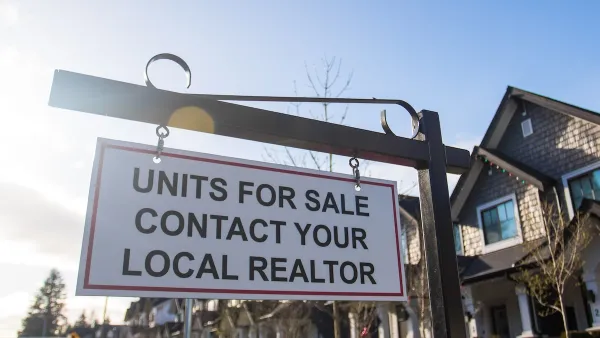New transit stations can have major gentrifying impacts on neighborhoods -- from median income to car ownership rates, according to a recent study.
The study from Northeastern University looked at the impact of new transit stations in 42 neighborhoods in 12 metropolitan areas. Many of them showed signs of gentrification, including rent increases, rise in car ownership and rise in income, according to this summary from Next American City.
"These facts seem to demonstrate that the arrival of a new transit station will result in significant changes in the type of people who inhabit the neighborhood. Of the cities studied, those with light rail were the most likely to see major changes. The evidence related to increases in housing costs, owner-occupation, and automobile ownership seems to suggest that the population of these neighborhoods becomes wealthier over time. (This does not necessarily mean the poorer residents of the neighborhood have moved out; growing populations could mean simply a higher density over time. This study makes an assumption this this transition is happening.) Interestingly, this does not necessarily mean more white: Only half of new transit neighborhoods saw an increase in their white population relative to the region as a whole, with the other half seeing a drop."
FULL STORY: Transit-Friendly Neighbors, Removed from Transit-Friendly Neighborhoods?

Planetizen Federal Action Tracker
A weekly monitor of how Trump’s orders and actions are impacting planners and planning in America.

Restaurant Patios Were a Pandemic Win — Why Were They so Hard to Keep?
Social distancing requirements and changes in travel patterns prompted cities to pilot new uses for street and sidewalk space. Then it got complicated.

Map: Where Senate Republicans Want to Sell Your Public Lands
For public land advocates, the Senate Republicans’ proposal to sell millions of acres of public land in the West is “the biggest fight of their careers.”

Maui's Vacation Rental Debate Turns Ugly
Verbal attacks, misinformation campaigns and fistfights plague a high-stakes debate to convert thousands of vacation rentals into long-term housing.

San Francisco Suspends Traffic Calming Amidst Record Deaths
Citing “a challenging fiscal landscape,” the city will cease the program on the heels of 42 traffic deaths, including 24 pedestrians.

California Homeless Arrests, Citations Spike After Ruling
An investigation reveals that anti-homeless actions increased up to 500% after Grants Pass v. Johnson — even in cities claiming no policy change.
Urban Design for Planners 1: Software Tools
This six-course series explores essential urban design concepts using open source software and equips planners with the tools they need to participate fully in the urban design process.
Planning for Universal Design
Learn the tools for implementing Universal Design in planning regulations.
Heyer Gruel & Associates PA
JM Goldson LLC
Custer County Colorado
City of Camden Redevelopment Agency
City of Astoria
Transportation Research & Education Center (TREC) at Portland State University
Camden Redevelopment Agency
City of Claremont
Municipality of Princeton (NJ)





























